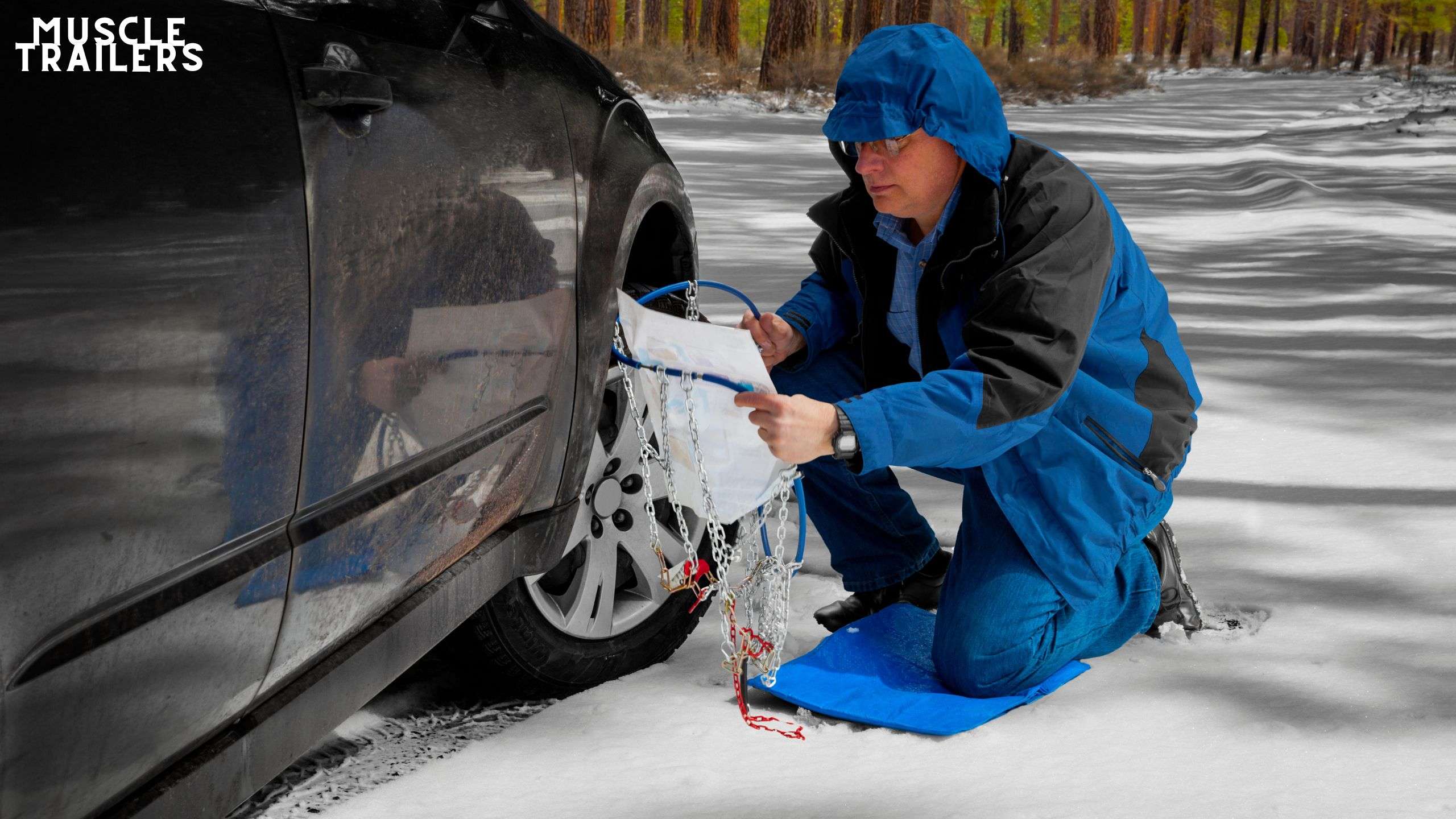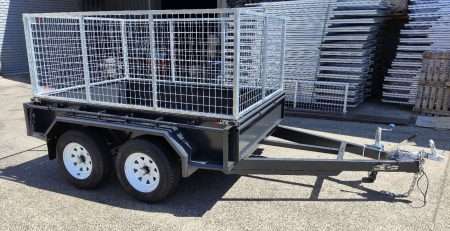
Conquer Winter Roads: Top Tyre Chains for Snowy Terrains
Understanding Tire Chains
Navigating through slippery roads in winter can be a daunting task. This is where tire chains come in. Known for their effectiveness in snowy terrains, tire chains can significantly enhance vehicle control and safety.
The Purpose of Tire Chains
Tire chains are designed to provide additional traction on snow and ice-covered roads. They consist of a series of metal links that wrap around the tire tread, providing improved grip and traction. Tire chains are particularly useful in helping vehicles get through heavy or dense snow, especially in mountainous areas prone to hefty snowfall during winter (Popular Mechanics).
These chains latch tightly onto the tires, preventing them from slipping and thereby allowing better grip on snow and ice-covered roads, and ultimately, giving the vehicle more traction and control.
Tire chains are most effective in severe weather conditions such as snow and ice, where there’s a risk of losing control of the vehicle. They offer superior traction compared to other winter traction devices like snow tires or studded tires (etrailer.com).
Different Types of Tire Chains
There are various types of tire chains available, each with its unique advantages and disadvantages. The most common types include ladder-style chains, cable chains, and studded chains.
Ladder-style chains, as the name suggests, have a ladder-like pattern that provides excellent grip and stability, particularly when stopping or accelerating. Cable chains, on the other hand, are lighter and easier to install, but may not provide as much traction as ladder-style chains. Studded chains offer the highest level of traction and are ideal for extreme winter conditions.
It’s important to consider the specific needs and driving conditions before selecting the best tire chains for snow. Factors such as vehicle type, tire size, and local laws and regulations can influence the choice of tire chains.
Understanding tire chains is the first step towards conquering winter roads. It’s also vital to know how to properly install and maintain them, as well as understand the legal requirements for their use. For more information on automotive accessories, you can explore topics on lug nuts, wheel locks, and tire pressure gauges.
Installation of Tire Chains
When preparing for winter driving conditions, knowing how to properly size, select, and install tire chains is crucial. In this section, we delve into the process of setting up tire chains for snow.
Sizing and Selecting Chains
The first step in choosing tire chains is to ensure they are the correct size for your vehicle’s tires. To size a tire that is not listed, the tire chain company needs three dimensions: the tread width, the tire width, and the height of the sidewall. They can then calculate the suitable tire chains options.
Tire chains are designed to fit a range of tire sizes and tread designs. The overall length of the chains may be longer than necessary, but the length can be shortened by removing some cross chains. The hooks holding the cross chain to the side chain are not hardened and can be opened with a chisel or vise.
| Tire Dimension | Tire Chain Size |
|---|---|
| Tread Width | Customizable |
| Tire Width | Customizable |
| Sidewall Height | Customizable |
Installation Process and Guidelines
Before installing tire chains, it is important to check the vehicle’s owner’s manual for any specific instructions or limitations regarding their use. Some vehicles may have restrictions on the use of tire chains, so it’s crucial to verify this information to avoid causing damage to your vehicle.
The process of installing tire chains involves laying out the chains, driving onto them, and then securing them around the tires. When installing tire chains, it is essential to ensure they are properly tightened and secured to prevent damage to the tires or other parts of the vehicle.
- Lay out the chains: Spread the chains out on a flat surface and remove any twists or tangles.
- Position the chains: Drive onto the chains, ensuring that they are centered over the tire treads.
- Secure the chains: Hook the chains together and tighten them to ensure a snug fit.
While tire chains can significantly improve traction on snowy or icy roads, they should be used with caution. Always observe the recommended speed limit when driving with tire chains, and remove them as soon as you are on clear roads to prevent unnecessary wear and tear.
For more information on vehicle accessories and parts, be sure to explore our articles on lug nuts, wheel locks, and tire gauges.
Legal Requirements for Tire Chains
Understanding the legal requirements for tire chains, particularly ‘tire chains for snow’, is crucial for safe and lawful winter driving. These regulations vary significantly across different states in the U.S. and provinces in Canada.
State Specific Laws in the U.S.
In the U.S., tire chain laws vary by state. Some states require the use of tire chains under certain weather conditions, while others have no specific laws regarding tire chains.
States such as California, Nevada, and Oregon mandate that large commercial vehicles carry tire chains during certain weather conditions, such as snow or icy roads, regardless of whether they are actually used or not (The Trucker).
Furthermore, some states have specific laws regarding the use of tire chains. For instance, they may require all commercial vehicles to use them on certain roads during particular weather conditions, or require them to be used on specific types of vehicles.
Non-compliance with these regulations can result in fines and other penalties for drivers.
Additionally, some states require tire chains to be used on vehicles over a certain weight, such as 10,000 pounds or more.
Regulations in Canada
In Canada, tire chain regulations are determined by each province or territory, and they may vary in terms of when and where they are required.
Drivers should always check and comply with the specific tire chain laws and regulations in the states or provinces they will be traveling through, as well as any local restrictions or requirements.
While complying with these laws is a legal necessity, using tire chains can also be beneficial for improving traction in snowy or icy conditions, even when not legally required.
By understanding the legal requirements associated with tire chains, drivers can ensure they are prepared for any winter driving conditions they may encounter.
Benefits of Using Tire Chains
Tire chains are an essential accessory for vehicles navigating snowy and icy terrains, providing several benefits that aid in maintaining control and ensuring safety.
Enhanced Traction and Control
One of the primary benefits of using tire chains is the enhanced traction and control they provide when driving on snow and ice-covered roads. Tire chains wrap around the tread of the tires and latch tightly to prevent them from slipping, allowing the tires to get a better grip on snow and ice-covered roads. This increased grip gives the vehicle more traction and better control, reducing the risk of accidents (Forbes).
The improved traction provided by tire chains is especially beneficial in mountainous areas that see a lot of snow throughout the winter. They are also a popular choice for snow traction because they provide excellent grip on icy and snowy roads, increasing traction for better control and stability.
Safety in Extreme Weather Conditions
Tire chains are most effective in extreme winter driving conditions, such as deep snow, ice, and steep hills. They offer superior traction compared to other winter traction devices like snow tires or studded tires, ensuring safety in adverse weather conditions.
The use of tire chains can significantly reduce the risk of losing control of the vehicle in bad weather conditions such as snow and ice. Thus, their use can be critical to ensuring vehicle and passenger safety during winter.
In conclusion, the use of tire chains for snow provides enhanced control and safety in winter driving conditions. Remember that while tire chains provide these benefits, they should be used in conjunction with other safety measures such as maintaining proper tire pressure (tire pressure gauge), using wheel locks for security (wheel locks), and ensuring your tires are in good condition (tire repair kit](https://muscletrailers.com.au/category/articles/tire-repair-kit)).
Important Considerations for Tire Chains
Before opting for tire chains for snow, it’s essential to consider a few factors to ensure these chains effectively serve their purpose, which is to provide increased grip and traction on slippery surfaces. Two key considerations include vehicle compatibility and speed limitations.
Vehicle Compatibility
Before installing tire chains, it is crucial to check your vehicle’s owner’s manual or contact the vehicle manufacturer. Some vehicles have restrictions on using tire chains due to potential damage to suspension components or interference with the braking system.
It’s also important to note that four-wheel-drive vehicles should use tire chains on all four tires for increased safety and control. Two-wheel-drive vehicles should use tire chains on the drive axle. However, it is safer and easier to control the vehicle with tire chains on all four tires.
Likewise, the size of the chains must correspond with the tire sizes. Different size chains are made for different tire sizes. Choosing the right size tire chains can avoid damaging the tires.
Speed Limitations and Usage Guidelines
Tire chains are most effective in extreme winter driving conditions, such as deep snow, ice, and steep hills. They offer superior traction compared to other winter traction devices like snow tires or studded tires.
However, when driving with tire chains, it is recommended to keep your driving speed under 30 mph for increased safety. Driving at higher speeds with tire chains can be dangerous.
Tire chains should be removed when driving on dry roads or roads that are not covered in ice or snow. Driving with chains on dry pavement can cause excessive wear and damage to both the chains and the tires.
Understanding these considerations can help ensure that your tire chains serve their purpose effectively and safely. For more tips and insights on maintaining and caring for tire chains, consider exploring other automotive tire and wheel accessories like lug nuts, wheel locks, and wheel spacers.
Maintaining and Caring for Tire Chains
The efficient use of tire chains for snow doesn’t end with the installation or the drive. Proper maintenance and care extend the life of tire chains, ensuring they continue to provide the much-needed traction and control during the winter season.
Proper Removal and Storage
Once the roads are clear of snow or ice, it’s necessary to remove the tire chains. Driving with chains on dry pavement can cause excessive wear and damage to both the chains and the tires (etrailer.com). To maintain the durability of your tire chains, ensure that they are only used in appropriate conditions.
The removal process should be quick and efficient, especially in challenging weather. Thus, practice the installation and removal process before actual use to familiarize yourself with the process.
After removal, clean the chains thoroughly, removing any dirt or grit. Once clean, allow them to dry before storing to prevent rusting. Store your chains in a cool, dry place, and ensure they are easily accessible for use when needed.
Ensuring Longevity of Tire Chains
The durability of tire chains depends on proper usage and care. Here are some tips to help extend the life of your tire chains:
- Only use chains when necessary. Excessive use on dry roads can lead to wear and damage.
- Drive at a moderate speed when chains are installed. High speeds can cause damage to both your tires and the chains.
- Regularly check for any signs of wear or damage. Address any issues promptly to prevent further damage.
- Clean and dry chains thoroughly before storage to avoid rusting.
Remember, before installing tire chains, it’s essential to check your vehicle’s owner’s manual or contact the vehicle manufacturer to ensure that your tires are compatible with chains. Some vehicles have restrictions on using tire chains due to possible damage to suspension components or interference with the braking system.
Winter road safety is not limited to using tire chains. There are other accessories and tools to enhance safety and performance during winter. These include lug nuts, tire pressure gauges, and tire repair kits.
By properly maintaining and caring for your tire chains, you can ensure they serve you well for many winters to come.
Author
I am Rahatul Ashiq Tamal. Another author of Muscle Trailers. Muscle Trailers is a well-known trailer brand in Sydney, Melbourne & Adelaide

How to Mount a Spare Tire on Your Trailer: A Simple Step-by-Step Guide
Trailer service centers receive over 1 million phone calls and 1.3 million emails each year about trailer maintenance problems....

How to Fix RV Roof Leaks: Simple Roof Leak Detection Guide for Beginners
Did you know DIY RV roof repairs can cost under $50? But undetected leaks could lead to substantially higher repair...

Starting a Food Truck Business in Australia: From Trailer Selection to Launch
The Australian mobile food market has evolved into a billion-dollar industry. This makes a food truck...
